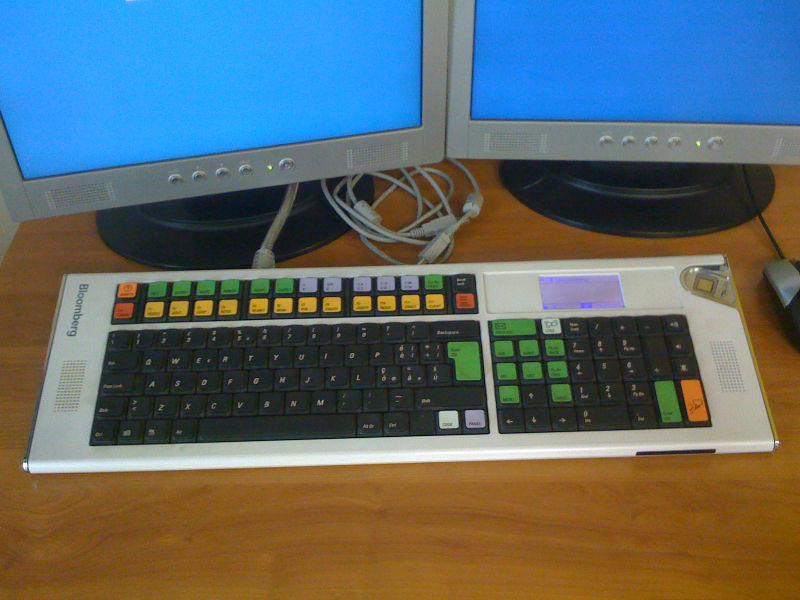 Image: Wikimedia.org
Image: Wikimedia.orgFor nearly three decades, the famous Bloomberg terminal has been running on screens in Wall Street trading desks and in the offices of financial companies around the world. This is a hardware-software complex, which means the presence of its own iron. The Bloomberg keyboard has become a truly iconic gadget in its history. Today we will see how it has changed from the early eighties to the present day.
What it is
The terminal Bloomberg tool is used by traders and heads of financial organizations to obtain vital business information and transactions. Bloomberg climbed to the top in the eighties, ousting from the market the tools that traders used previously - for example,
Quotron and
Telerate .
For access to unique data (for example, software in real time
shows the movement of tankers with petroleum products) banks and other financial companies are willing to pay more than $ 20,000 per year for one license. So in 2016 Bank of America
spent $ 420 million on licenses from the Bloomberg terminal and the company's commission - more than ten thousand terminals operated in the company.
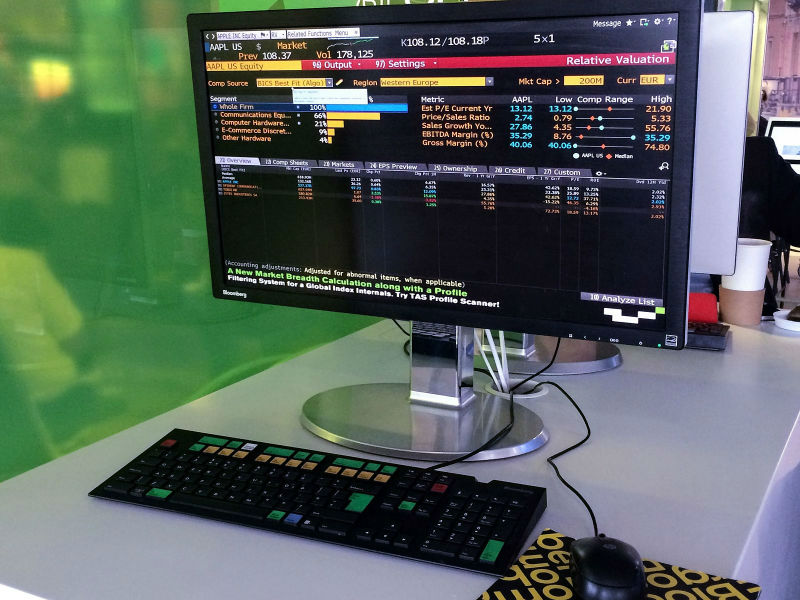 This is what the terminal Bloomberg | Image: Amin - Own work, CC BY-SA 4.0
This is what the terminal Bloomberg | Image: Amin - Own work, CC BY-SA 4.0Currently, the Bloomberg LP revenue exceeds $ 7 billion a year, and a significant part of it comes from licensing fees - there are about 325,000 terminals in the world.
Keyboard bloomberg
The terminal Bloomberg has always been not just a software package, its most important part was its own hardware. The main gadget of the system at all times was a keyboard specially designed for financiers.
In particular, the keyboard was originally designed for traders and financiers who had not previously had experience working on a computer. Therefore, despite the fact that the appearance of the keyboard was similar to what was presented on the market, there were some important differences - for example, the color differentiation of keys was implemented to perform various tasks.
This is how the Bloomberg terminal keyboard changed from the moment it entered the market to the present day (image:
Bloomberg.com ):
1983: The Chiclet
The original keyboard model Chiclet was assembled by hand. In those days, each gadget needed a special cable to work, leading from the user's desktop to a special room with equipment, where Bloomberg Controller was installed and dedicated telephone lines were connected to a local network hub.
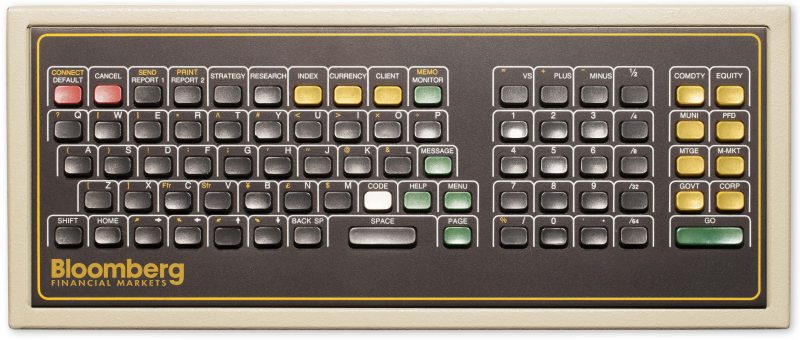
1986: The Grid
The Grid terminal model, which was released a few years later, made a real revolution in the market. Users were able to connect to the trading system not only from the office, but from home and on trips. In those days it was hard to imagine such a thing. The connection was organized using a modem via POTS (Plain Old Telephone Service) lines. There were several data transfer speeds available: 1200 bits per second, 2400 bps, 4800 bps, and the VIP version 9600 bps, for which a separate modem board was built directly into the device using Velcro technology.
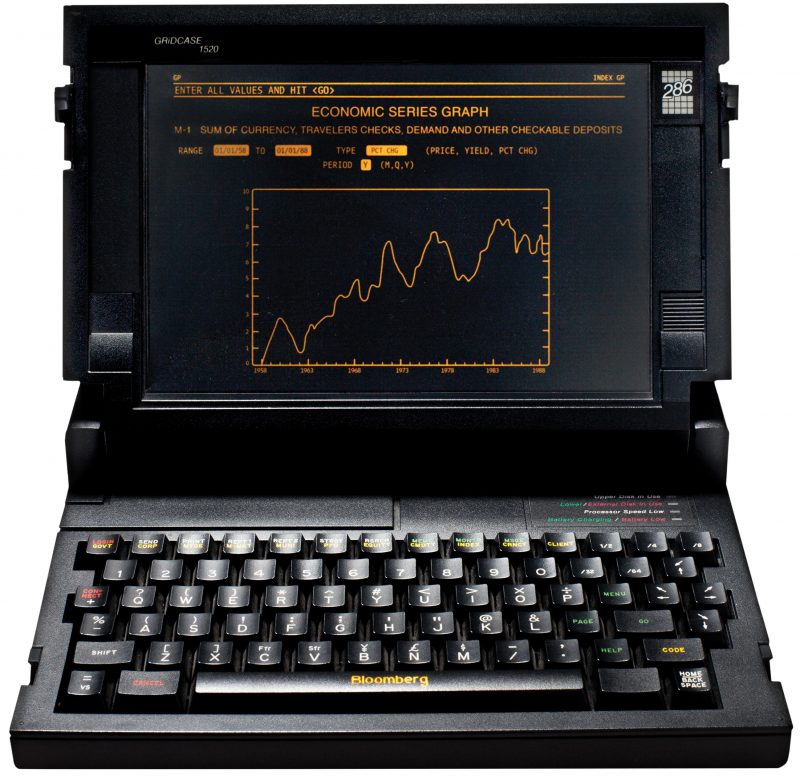
1990: Trackball
The first redesign of the original keyboard version. The introduction of the trackball allowed us to speed up the work with the terminal.
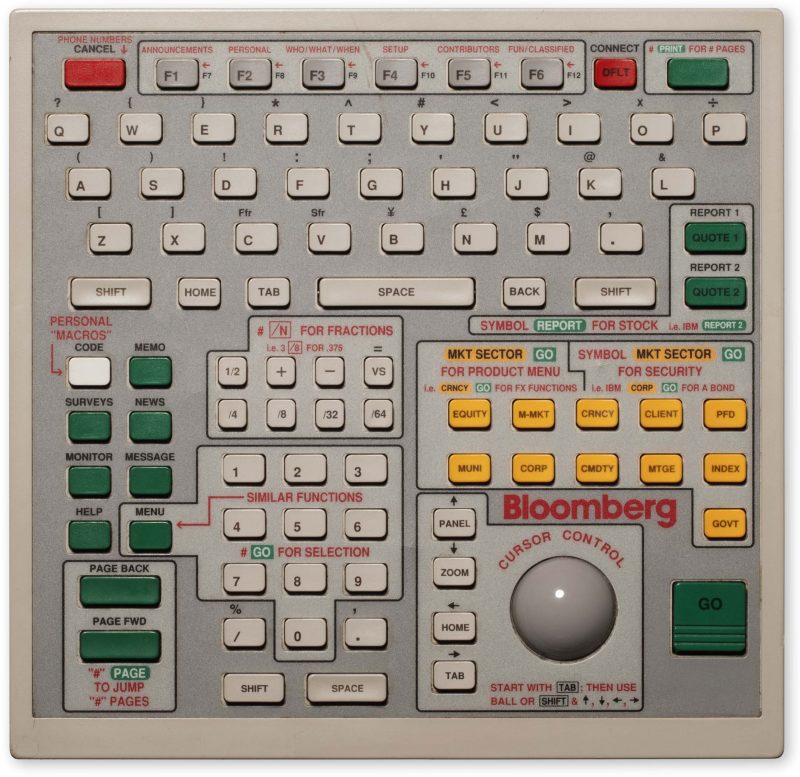
1992: Trackball with Speaker
Two years later, after the release of the model with the trackball, its upgrade appeared - this time a speaker, jacks for connecting telecommunication devices, ports for connecting a microphone and headphones were built into the keyboard.
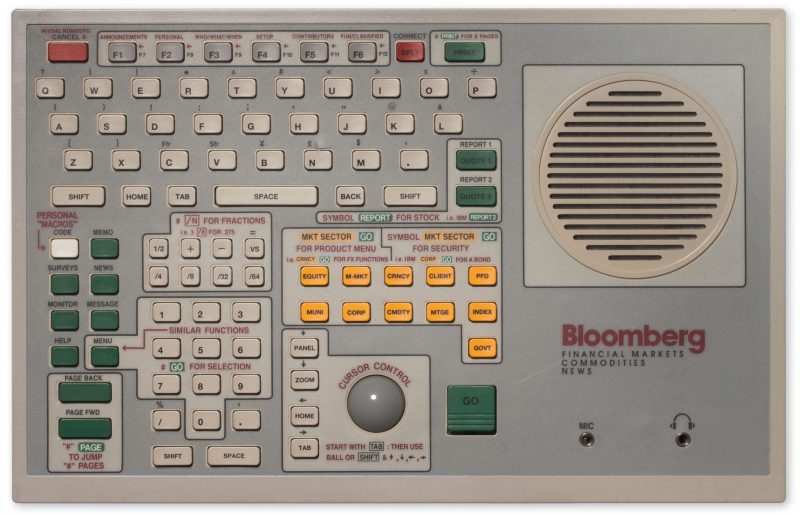
1994: PC-style
By the mid-nineties, the popularity of the PC had grown so much that it became necessary to bring the design of Bloomberg devices closer to the patterns familiar to users all over the world. In addition, it was the first step to allowing users to connect the keyboard to their own computers, rather than use the company's software and hardware complex.
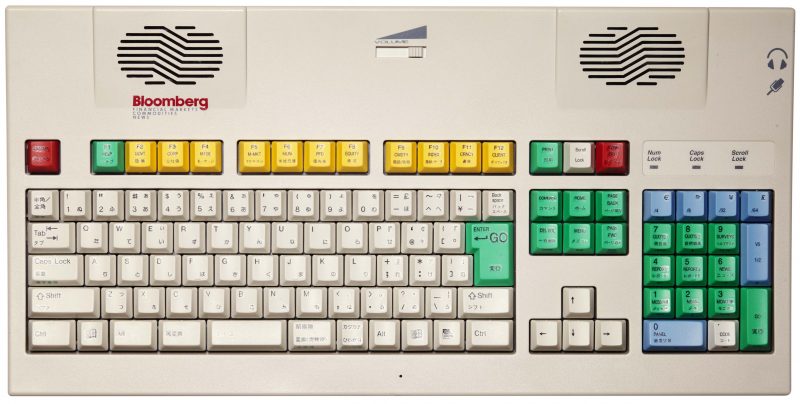
1995: Infra-red keyboard
The first wireless model that used infrared to connect to a PC.
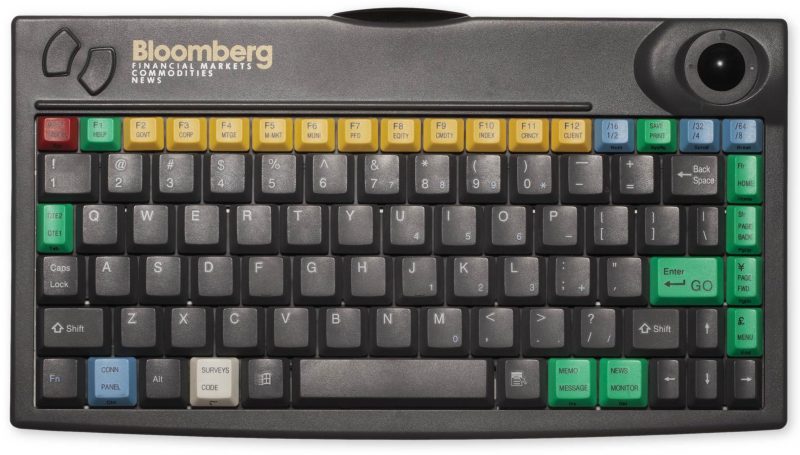
1996: Classic
The classic keyboard, thanks to its popularity, is presented even in the
collections of the Smithsonian Institution Museum .
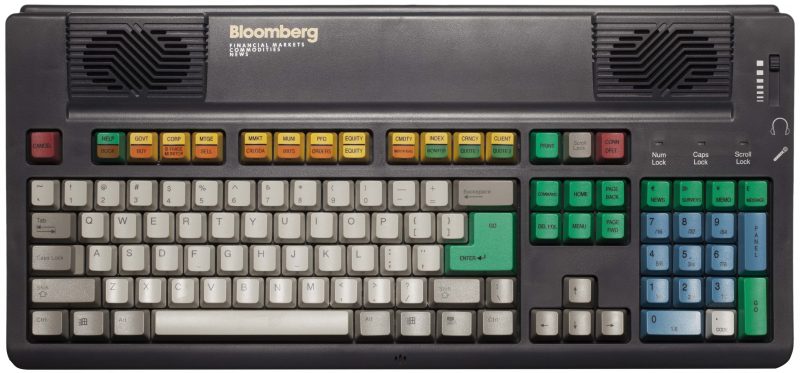
1996: Tradebook
This version of the keyboard supported 23 languages, the opportunity to reconfigure actions for the keys.
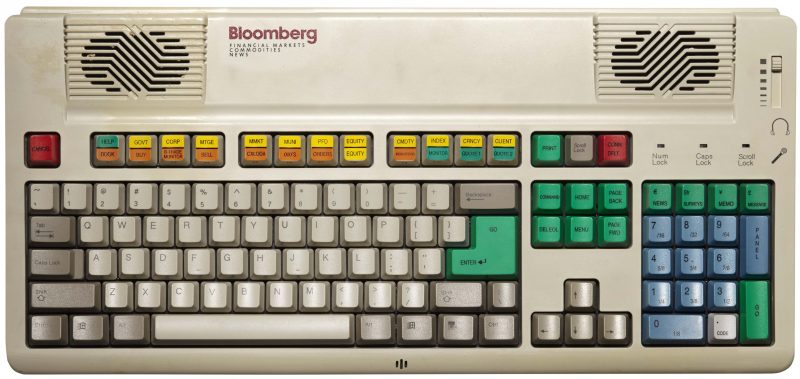
2004: Centerboard
During the redesign in the middle of the two thousandth, new functions appeared in the keyboard, such as biometric authentication, as well as support for advanced multimedia and communications features. The name of the keyboard was due to its increased length - in form it resembled a retractable keel on small sailing boats (
centerboard ).

2008: Freeboard
When developing a new version of the keyboard, engineers sought to reduce its size, while retaining the possibility of a wireless connection. For this, in particular, the location of the biometric sensor was changed.
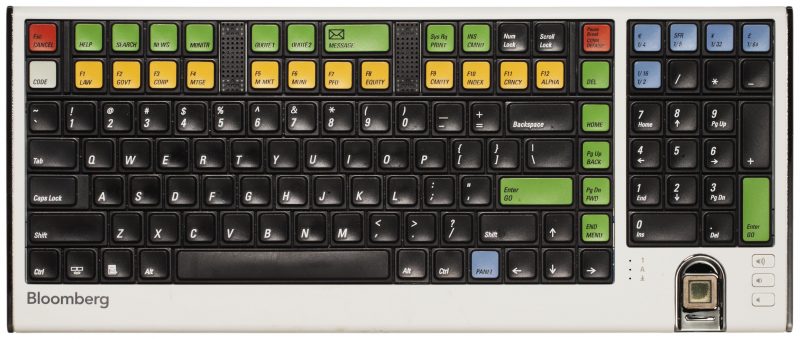
Our days: Starboard
The current keyboard version is called Starboard. Its design is also close to the usual users of conventional computers and laptops.
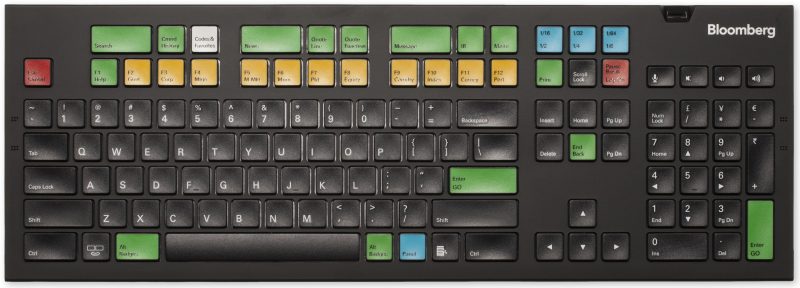
Conclusion
Despite the fact that many are confused by the huge cost of the Bloomberg terminal and its outdated interface, this system still remains the leading instrument of financiers from around the world. And although some are trying to create programmable keyboards with their own hands in the near future, Bloomberg Terminal will retain its position in the market.
Other materials on finance and stock market from ITI Capital :